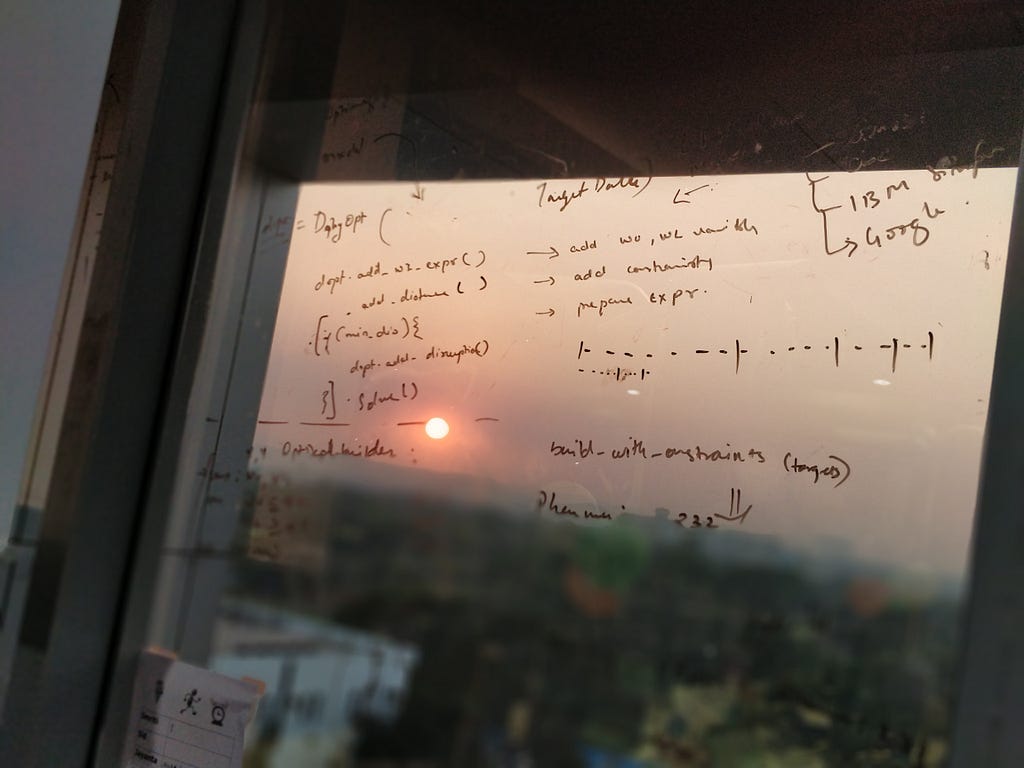Latest news about Bitcoin and all cryptocurrencies. Your daily crypto news habit.

In this article, we will be focusing on modeling linear optimization problems using Julia.
To know more about Julia, please find link here.To know more about linear optimization, please find link here.
Julia has a package named JuMP for modeling optimization problems.JuMP is a domain specific modeling language which can be used for linear, mixed -integer, non-linear problems.
JuMP internally uses MathProgBase. MathProgBase provides solver independent high level functions, which can be used for interaction with number of solvers like Cbc, Clp, CPLEX, Gurobi etc. In this example, We will be using Cbc as a solver. Cbc is an open source mathematical solver which supports linear, as well as mixed integer problems.
1. Create a model
using JuMPusing Cbc
lpModel = Model(solver = CbcSolver(seconds = 3600))
Before we create model using JuMP, let’s make sure that we install JuMP and Cbc.
Pkg.add(“JuMP”)Pkg.add("Cbc")2. Define variables
@variable(lpModel, x <= 5)@variable(lpModel, y >= 6)
We are creating two variables, namely x and y with the predefined bounds.
3. Create constraints
@constraint(lpModel, x+y <= 20)@constraint(lpModel, 2x + 3y >= 28)
4. Create an Objective
@objective(lpModel, Max, x + y)
5. Solve and read the answer
status = JuMP.solve(lpModel)getvalue(x)getvalue(y)
Let’s take an example.
Once, group of 18 students entered newly set up cafe. The cafe had just two items and menu card was something like this.
1. Tea INR 20 2. Coffee IN R30
Out of 18, 5 of the students asked for Tea and 6 said they would have Coffee. Remaining 7 were okay with either of the beverage.Also, they did not want to spend more than 470 INR. That confused the hotel manager. He used to get INR 2of profit on Tea and INR 3 of profit on Coffee. He wanted to maximize the profit and wasn’t sure how to do that. Let’s try and help him.
Solution
Assume, x is number of students asking for Tea and y be the number of students who want coffee.At least 5 of them want Tea.
x >= 5Similarly, y >= 6
We know, there are total 18 students, and hence, x + y = 18.Total expense can not be more than 470, and hence
20x + 30y <= 470
The goal is to maximize profit, which means
Maximize profit, denoted by 2x + 3y, as every cup of Tea will generate profit of INR 2, and every mug of coffee will generate profit of INR 3.
using JuMPusing Cbc
lpModel = Model(solver = CbcSolver(seconds = 3600))
@variable(lpModel, x >= 5)@variable(lpModel, y >= 6)
@constraint(lpModel, x+y == 18)@constraint(lpModel, 20x + 30y <= 470)
@objective(lpModel, Max, 2x + 3y)
status = JuMP.solve(lpModel)
println("Number of Tea Cups: $(getvalue(x))")println("Number of Coffee Mugs : $(getvalue(y))")Above code should output
Number of Tea cups: 7.0Number of Coffee Mugs : 11.0
Which would mean, the maximum profit should be
2 * 7 + 3 * 11 = INR 47
Now, let’s make the problem a bit more interesting. Instead of total budget being INR 470, let’s assume the budget is INR 475.
So, we need to modify one of the constraints.
@constraint(lpModel, 20x + 30y <= 475)
That’s easy. Let’s run the entire code with modified constraint and see what the output is.
Number of Tea Cups: 6.5Number of Coffee Mugs : 11.5
What went wrong? Cause, there’s no point serving someone with half cup of Tea and half mug of coffee, right? We need to make sure, that ‘x’ and ‘y’ are discrete integer variables and not continuous.Let’s change the variable declarations to
@variable(lpModel, x >= 5, Int)@variable(lpModel, y >= 6, Int)
This would also lead to same output as that of earlier.
Number of Tea Cups: 7.0Number of Coffee Mugs : 11.0
Thanks for reading. Your feedback is highly appreciated.
Linear optimization using Julia was originally published in Hacker Noon on Medium, where people are continuing the conversation by highlighting and responding to this story.
Disclaimer
The views and opinions expressed in this article are solely those of the authors and do not reflect the views of Bitcoin Insider. Every investment and trading move involves risk - this is especially true for cryptocurrencies given their volatility. We strongly advise our readers to conduct their own research when making a decision.